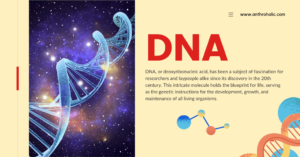AI Answer Evaluation Platform Live Now. Try Free Answer Evaluation Now
Biological and Cultural Factors in Human Evolution
Human evolution is a complex and fascinating process driven by various factors that have interacted over millions of years to shape the course of our species’ development. This article will explore the biological and cultural factors that have played significant roles in human evolution, as well as examine the interactions between these factors. In doing so, this article will provide a comprehensive overview of the key elements influencing human evolutionary history.

Biological Factors in Human Evolution
A. Genetic Mutations
Genetic mutations are random changes in an organism’s DNA sequence and are a crucial driver of evolution [25]. They provide the raw material for evolution, as they can introduce new genetic variations that may be advantageous or detrimental to an individual’s survival and reproduction. Some key genetic mutations in human evolution include:
- FOXP2 gene: Associated with speech and language development [10].
- Lactase persistence: Enables the digestion of lactose in adulthood [2].
- AMY1 gene: Related to the production of amylase, an enzyme that helps digest starch [23].
B. Natural Selection
Natural selection is the process by which organisms better adapted to their environment tend to survive and produce more offspring, leading to the spread of advantageous traits in a population [7]. Some examples of natural selection in human evolution include:
- Bipedalism: The ability to walk on two legs, which provided advantages in energy efficiency, thermoregulation, and freeing the hands for tool use [19].
- Enlarged brain size: Allowed for increased cognitive abilities, problem-solving skills, and social intelligence [9].
- Skin pigmentation: Adaptation to different levels of ultraviolet radiation, protecting against sunburn and skin cancer while enabling vitamin D synthesis [15].
C. Sexual Selection
Sexual selection is a type of natural selection that favors traits that increase an individual’s chances of attracting mates and reproducing [8]. In human evolution, sexual selection may have played a role in the development of:
- Facial and body hair reduction: Possibly linked to reduced parasite loads and increased attractiveness [22].
- Permanent breast size: May signal fertility and reproductive potential [5].
- Long-term pair bonding: Facilitated the provisioning of resources and parental care, increasing offspring survival [12].
D. Gene-Culture Coevolution
Gene-culture coevolution is a process where cultural practices influence genetic evolution and vice versa [16]. Examples of gene-culture coevolution in human history include:
- Dairy farming and lactase persistence: The spread of dairy farming led to increased selection for lactase persistence in populations with access to milk [2].
- Agriculture and amylase gene copy number: The rise of agriculture and increased consumption of starch-rich foods favored individuals with more amylase gene copies, enhancing starch digestion [23].
- Cooking and jaw size: The advent of cooking led to a reduction in jaw size, as softer foods required less robust chewing structures [30].
Cultural Factors in Human Evolution
A. Tool Use and Technology
Tool use and the development of technology have played crucial roles in human evolution, enabling our ancestors to adapt to and manipulate their environment [1]. Key developments in human tool use and technology include:
- Oldowan tools: The first known stone tools, used for cutting and processing food [27].
- Acheulean handaxes: More advanced bifacial tools for a variety of tasks, including butchery and woodworking [13].
- The controlled use of fire: Enabled cooking, expanded dietary options, and facilitated social interaction [29].
B. Language and Communication
Language and communication have been essential in the development of human culture and social organization [6]. They allowed for the transmission of complex information, facilitated cooperation, and enabled the emergence of collective identity. Key milestones in the evolution of human language and communication include:
- The emergence of symbolic thought: The ability to represent objects and concepts abstractly, evidenced by early cave art and symbolic artifacts [20].
- The development of spoken language: Enabled by genetic and anatomical adaptations, such as the FOXP2 gene and a descended larynx [10].
- The invention of writing: Allowed for the recording and dissemination of knowledge across time and space [26].
C. Social Organization
Social organization has been a significant factor in human evolution, as it enabled the formation of large, cohesive groups that could cooperate, share resources, and defend against external threats [9]. Important aspects of human social organization include:
- Kinship and reciprocal altruism: The formation of social bonds based on genetic relatedness and mutually beneficial cooperation [14].
- Social hierarchies: The establishment of dominance and leadership structures to maintain group cohesion and resource distribution [3].
- Long-term pair bonding and nuclear families: Provided a stable social structure for raising offspring and fostering cooperation [12].
D. Art, Symbolism, and Rituals
Art, symbolism, and rituals have played important roles in human evolution by fostering social cohesion, transmitting cultural knowledge, and enabling the expression of complex ideas and emotions (Mithen, 1996). Examples include:
- Cave paintings and portable art: Early evidence of symbolic thought and the ability to represent abstract concepts [18].
- Rituals and ceremonies: Facilitated group bonding, social learning, and the transmission of cultural values [24].
- Music and dance: Enabled emotional expression, social bonding, and the communication of cultural identity [4].
Interactions between Biological and Cultural Factors
A. The Feedback Loop
Biological and cultural factors are interconnected and often influence one another in a feedback loop, where the development of one factor spurs changes in the other (Richerson & Boyd, 2005). For example, the development of bipedalism allowed for the use of tools, which in turn influenced the development of technology and the evolution of human culture. Similarly, the emergence of language and communication enabled more complex social organization, which subsequently influenced the evolution of human cognition and social behavior.
B. Niche Construction
Niche construction is the process by which organisms modify their environment, creating new selective pressures that shape their evolution [21]. In human evolution, niche construction has involved both biological and cultural factors, such as the development of agriculture, the construction of artificial habitats, and the domestication of animals. These cultural innovations have had lasting impacts on human biology, including changes in diet, disease exposure, and population densities, leading to further biological adaptations and the spread of cultural practices.
C. The Extended Evolutionary Synthesis
The Extended Evolutionary Synthesis (EES) is a theoretical framework that integrates various biological and cultural factors to provide a more comprehensive understanding of evolutionary processes [17]. The EES emphasizes the role of gene-culture coevolution, niche construction, and other interactions between biological and cultural factors in shaping human evolution. By considering these multiple levels of influence, the EES provides a richer and more nuanced perspective on the complex dynamics of human evolutionary history.
Conclusion
In conclusion, human evolution has been driven by a complex interplay of biological and cultural factors, with each influencing the other in intricate and dynamic ways. Genetic mutations, natural selection, sexual selection, and gene-culture coevolution have all played critical roles in shaping the biological aspects of our species’ development. Concurrently, cultural factors such as tool use and technology, language and communication, social organization, and art, symbolism, and rituals have also had profound impacts on our evolutionary trajectory.By examining the interactions between these factors and incorporating perspectives from the Extended Evolutionary Synthesis, we can better understand the multifaceted nature of human evolution and appreciate the rich tapestry of our species’ history.
References
[1] Ambrose, S. H. (2001). Paleolithic technology and human evolution. Science, 291(5509), 1748-1753.
[2] Bersaglieri, T., Sabeti, P. C., Patterson, N., Vanderploeg, T., Schaffner, S. F., Drake, J. A., … & Hirschhorn, J. N. (2004). Genetic signatures of strong recent positive selection at the lactase gene. The American Journal of Human Genetics, 74(6), 1111-1120.
[3] Boehm, C. (1999). Hierarchy in the forest: The evolution of egalitarian behavior. Harvard University Press.
[4] Brown, S. (2000). The “musilanguage” model of music evolution. The Origins of Music, 271-300.
[5] Cant, M. A., & Johnstone, R. A. (2008). Reproductive conflict and the separation of reproductive generations in humans. Proceedings of the National Academy of Sciences, 105(14), 5332-5336.
[6] Christiansen, M. H., & Kirby, S. (Eds.). (2003). Language evolution. Oxford University Press.
[7] Darwin, C. (1859). On the origin of species by means of natural selection, or the preservation of favoured races in the struggle for life. John Murray.
[8] Darwin, C. (1871). The descent of man, and selection in relation to sex. John Murray.
[9] Dunbar, R. I. (1998). The social brain hypothesis. Evolutionary Anthropology: Issues, News, and Reviews: Issues, News, and Reviews, 6(5), 178-190.
[10] Enard, W., Przeworski, M., Fisher, S. E., Lai, C. S., Wiebe, V., Kitano, T., … & Pääbo, S. (2002). Molecular evolution of FOXP2, a gene involved in speech and language. Nature, 418(6900), 869-872.
[11] Fitch, W. T. (2000). The evolution of speech: a comparative review. Trends in Cognitive Sciences, 4(7), 258-267.
[12] Geary, D. C. (2000). Evolution and proximate expression of human paternal investment. Psychological Bulletin, 126(1), 55-77.
[13] Gowlett, J. A. (2006). The elements of design form in Acheulean bifaces: Modes, modalities, rules and language. Axe age: Acheulian tool-making from quarry to discard, 203-221.
[14] Hamilton, W. D. (1964). The genetical evolution of social behaviour. I. Journal of Theoretical Biology, 7(1), 1-16.
[15] Jablonski, N. G., & Chaplin, G. (2010). Human skin pigmentation as an adaptation to UV radiation. Proceedings of the National Academy of Sciences, 107(Supplement 2), 8962-8968.
[16] Laland, K. N., Odling-Smee, J., & Myles, S. (2010). How culture shaped the human genome: bringing genetics and the human sciences together. Nature Reviews Genetics, 11(2), 137-148.
[17] Laland, K., Uller, T., Feldman, M., Sterelny, K., Müller, G. B., Moczek, A., … & Hoekstra, H. E. (2015). The extended evolutionary synthesis: its structure, assumptions and predictions. Proceedings of the Royal Society B: Biological Sciences, 282(1813), 20151019.
[18] Lewis-Williams, D. (2002). The mind in the cave: Consciousness and the origins of art. Thames & Hudson.
[19] Lovejoy, C. O. (1988). Evolution of human walking. Scientific American, 259(5), 82-89.
[20] Mithen, S. (1996). The prehistory of the mind: The cognitive origins of art, religion and science. Thames & Hudson.
[21] Odling-Smee, F. J., Laland, K. N., & Feldman, M. W. (2003). Niche construction: The neglected process in evolution. Princeton University Press.
[22] Pagel, M., & Bodmer, W. (2003). A naked ape would have fewer parasites. Proceedings of the Royal Society of London. Series B: Biological Sciences, 270(suppl_1), S117-S119.
[23] Perry, G. H., Dominy, N. J., Claw, K. G., Lee, A. S., Fiegler, H., Redon, R., … & Stone, A. C. (2007). Diet and the evolution of human amylase gene copy number variation. Nature Genetics, 39(10), 1256-1260.
[24] Rappaport, R. A. (1999). Ritual and religion in the making of humanity. Cambridge University Press.
[25] Ridley, M. (2004). Evolution (3rd ed.). Blackwell Publishing.
[26] Robinson, A. (2003). Writing and script: A very short introduction. Oxford University Press.
[27] Semaw, S., Renne, P., Harris, J. W., Feibel, C. S., Bernor, R. L., Fesseha, N., & Mowbray, K. (1997). 2.5-million-year-old stone tools from Gona, Ethiopia. Nature, 385(6614), 333-336.
[28] Trivers, R. L. (1971). The evolution of reciprocal altruism. The Quarterly Review of Biology, 46(1), 35-57.
[29] Wrangham, R. (2009). Catching fire: How cooking made us human. Basic Books.
[30] Wrangham, R. W., & Conklin-Brittain, N. L. (2003). Cooking as a biological trait. Comparative Biochemistry and Physiology Part A: Molecular & Integrative Physiology, 136(1), 35-46.



